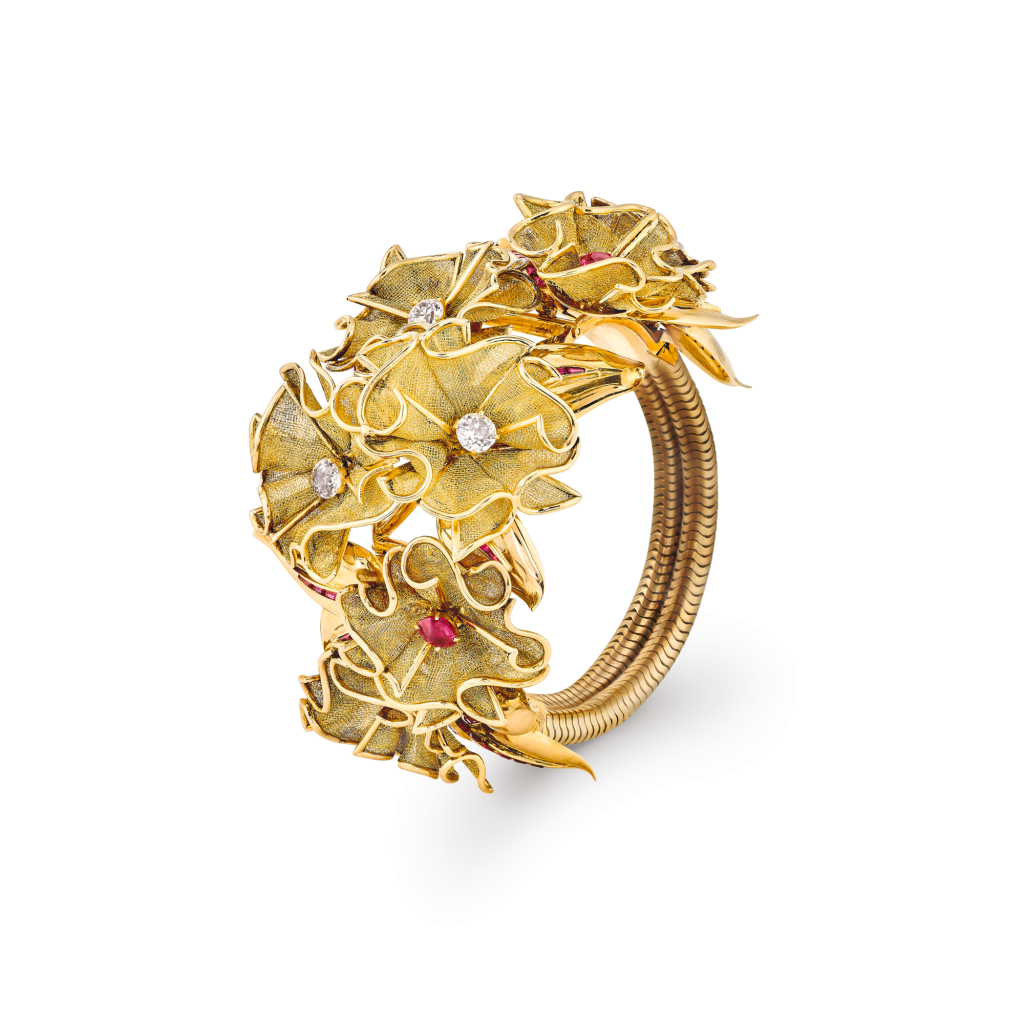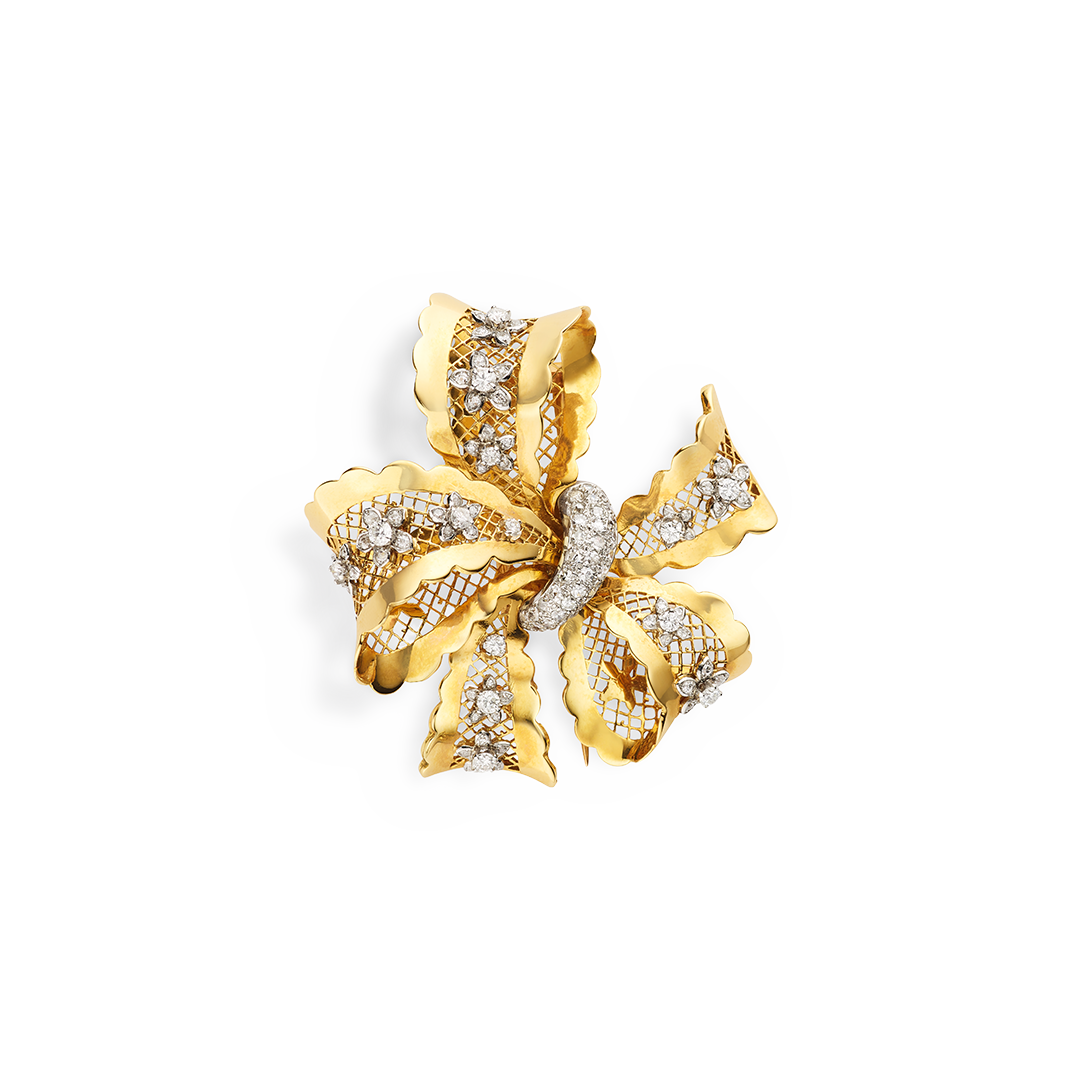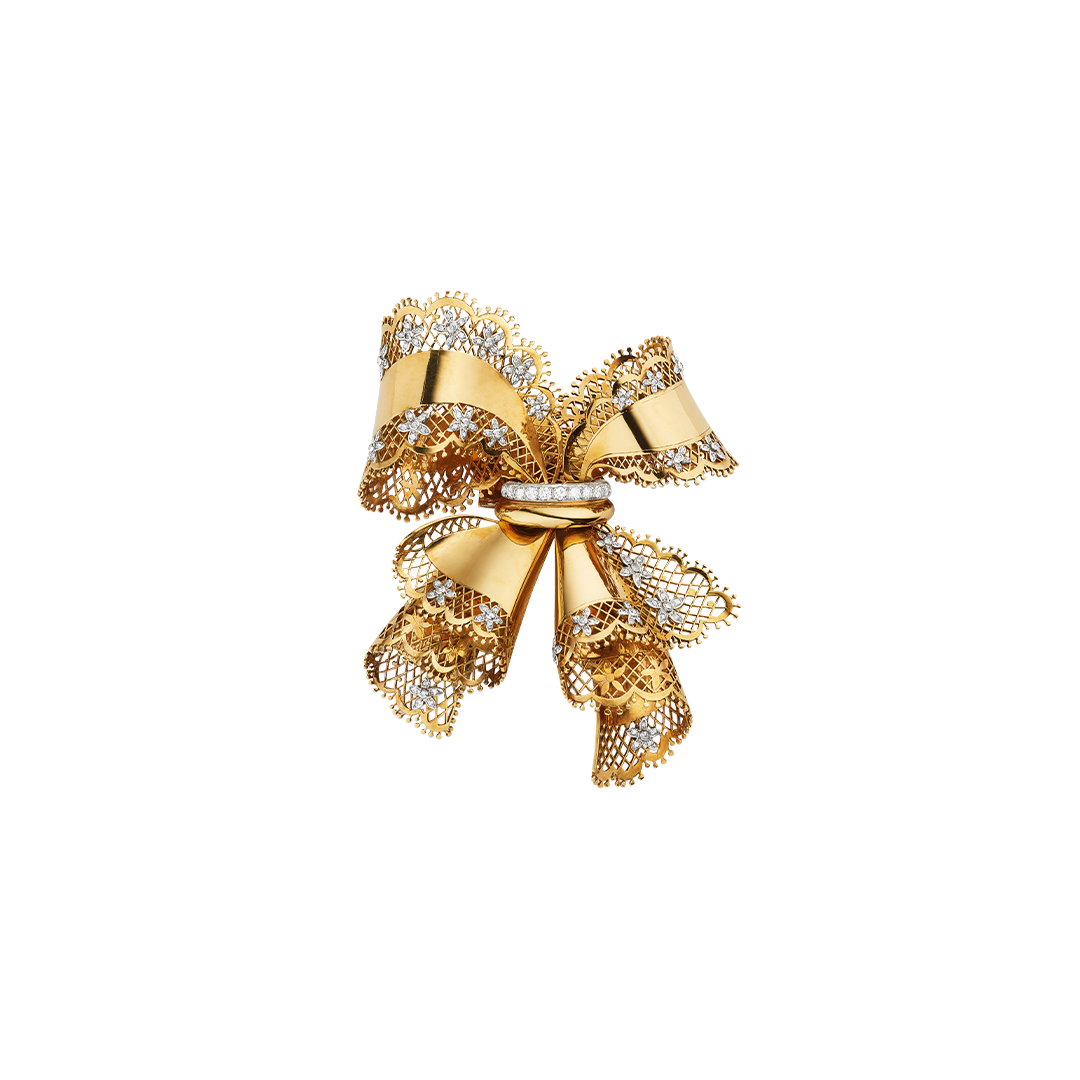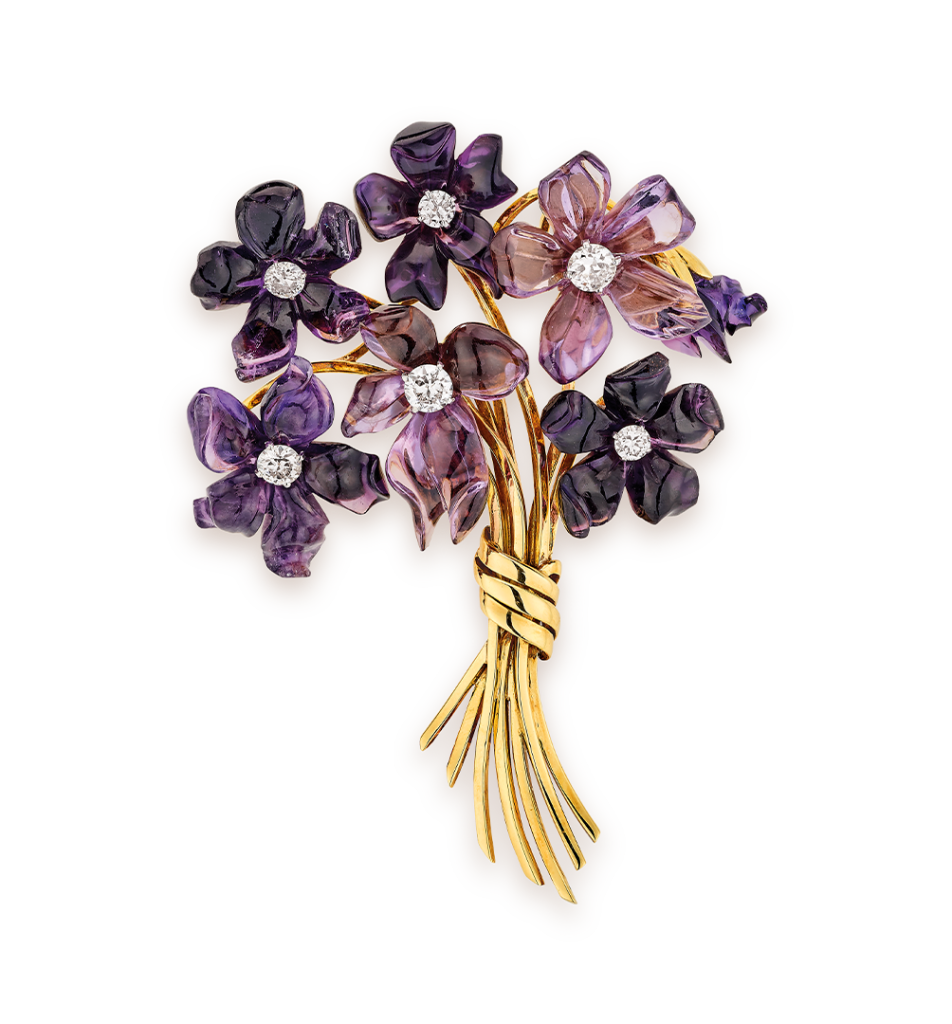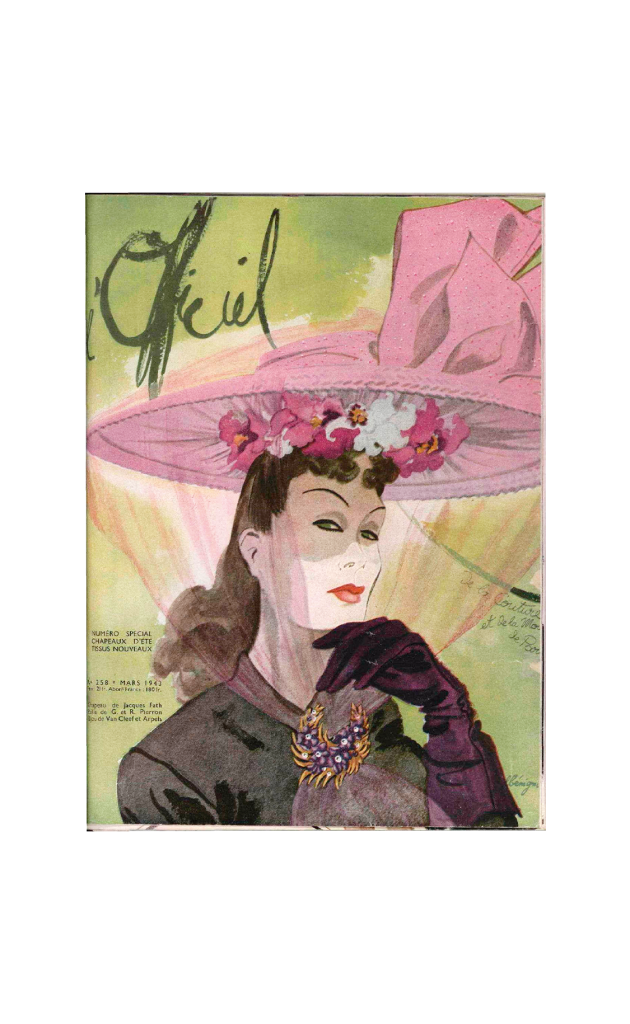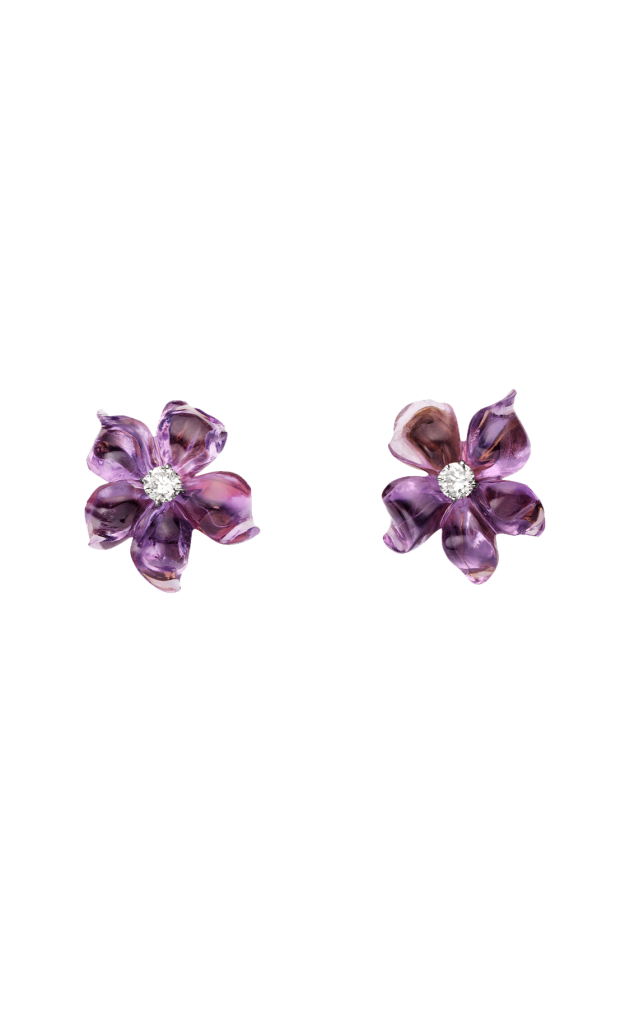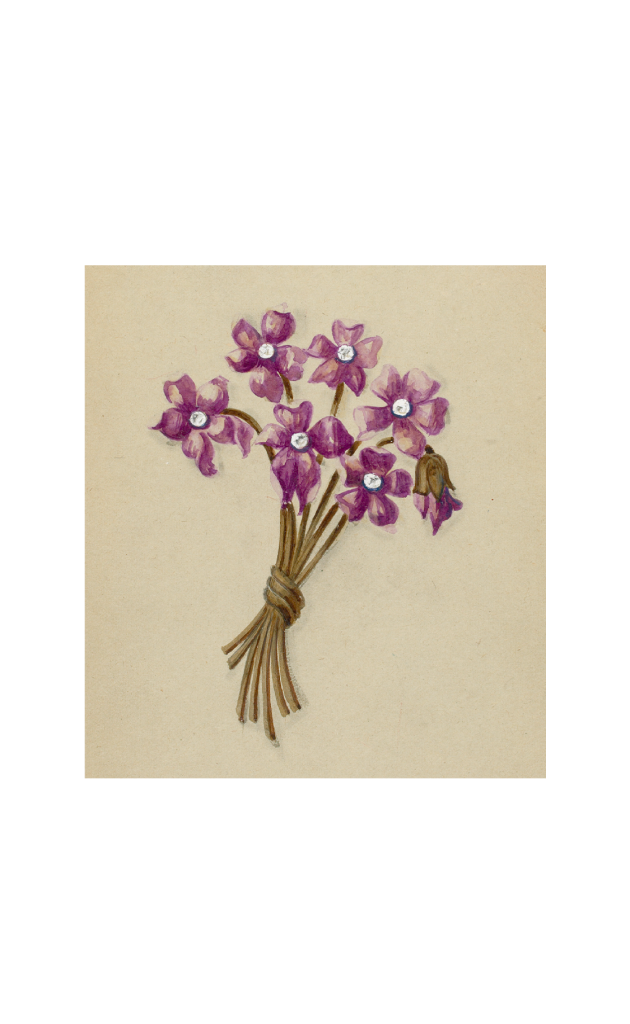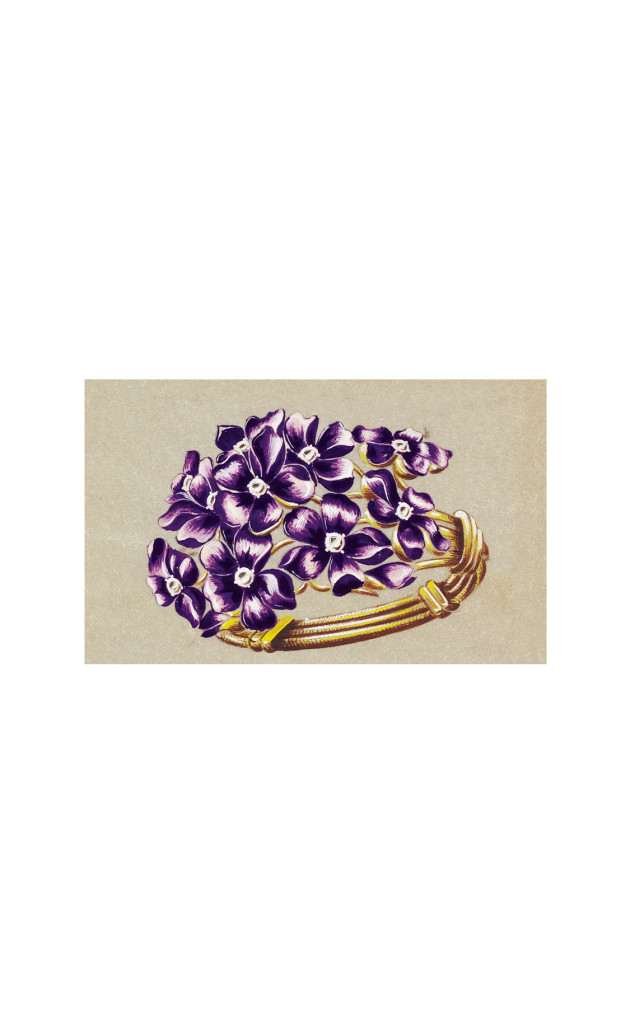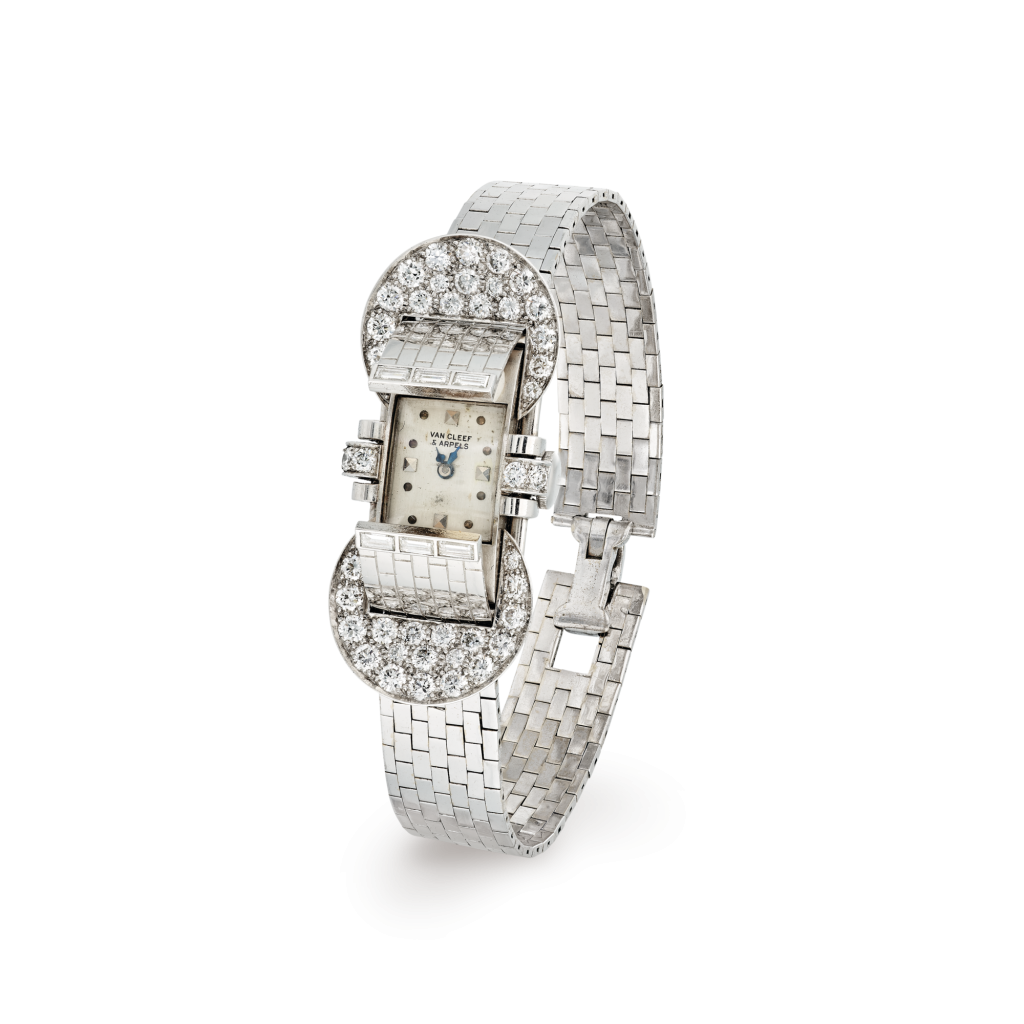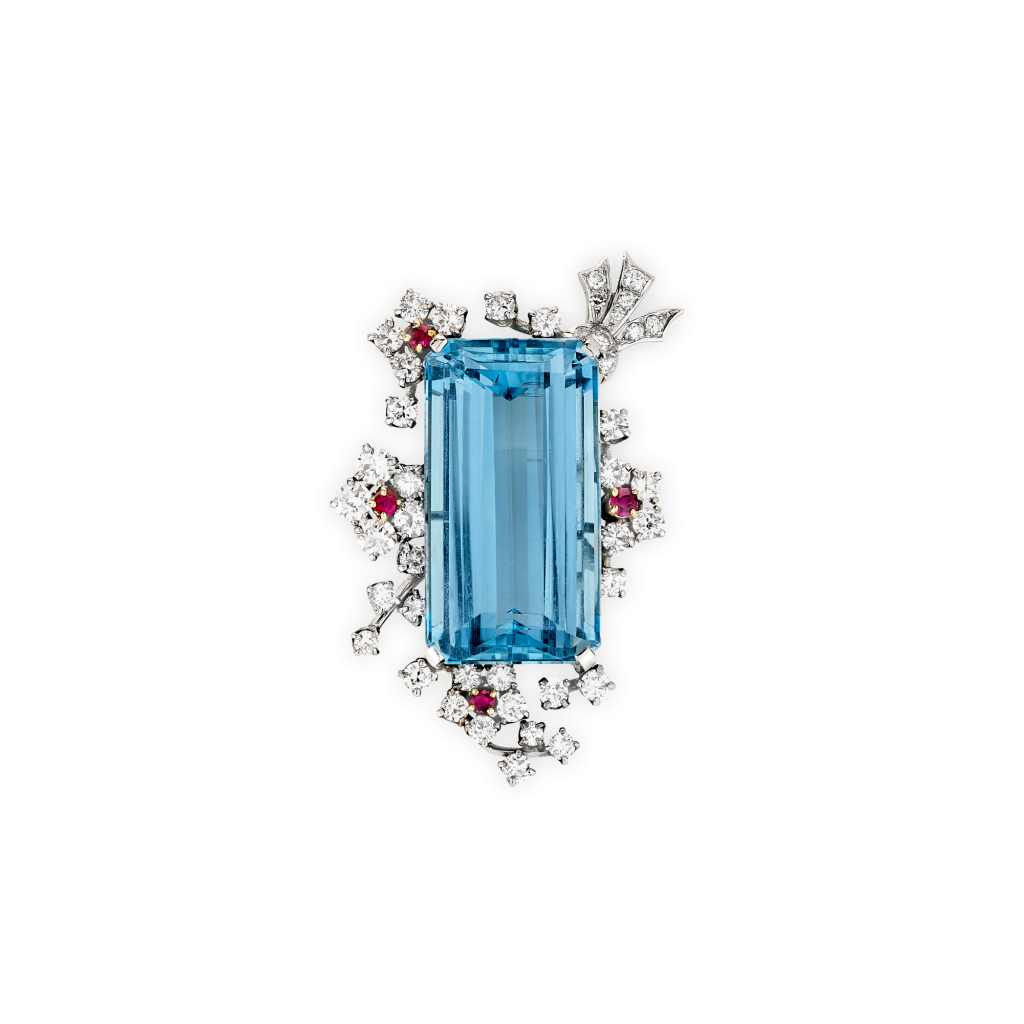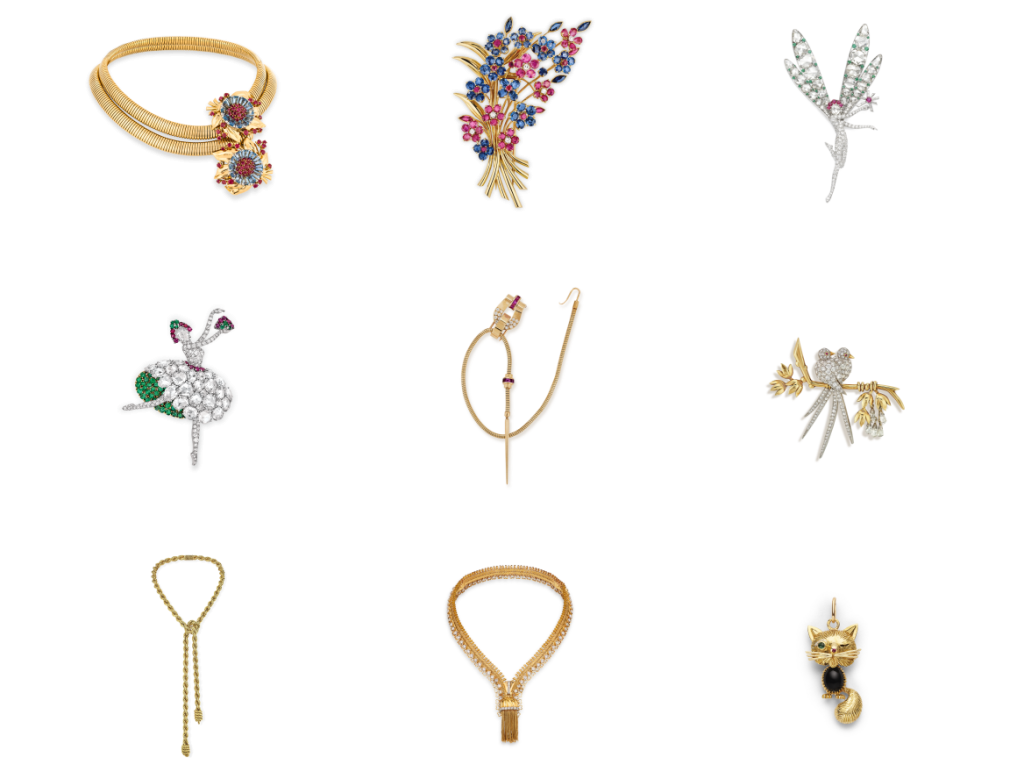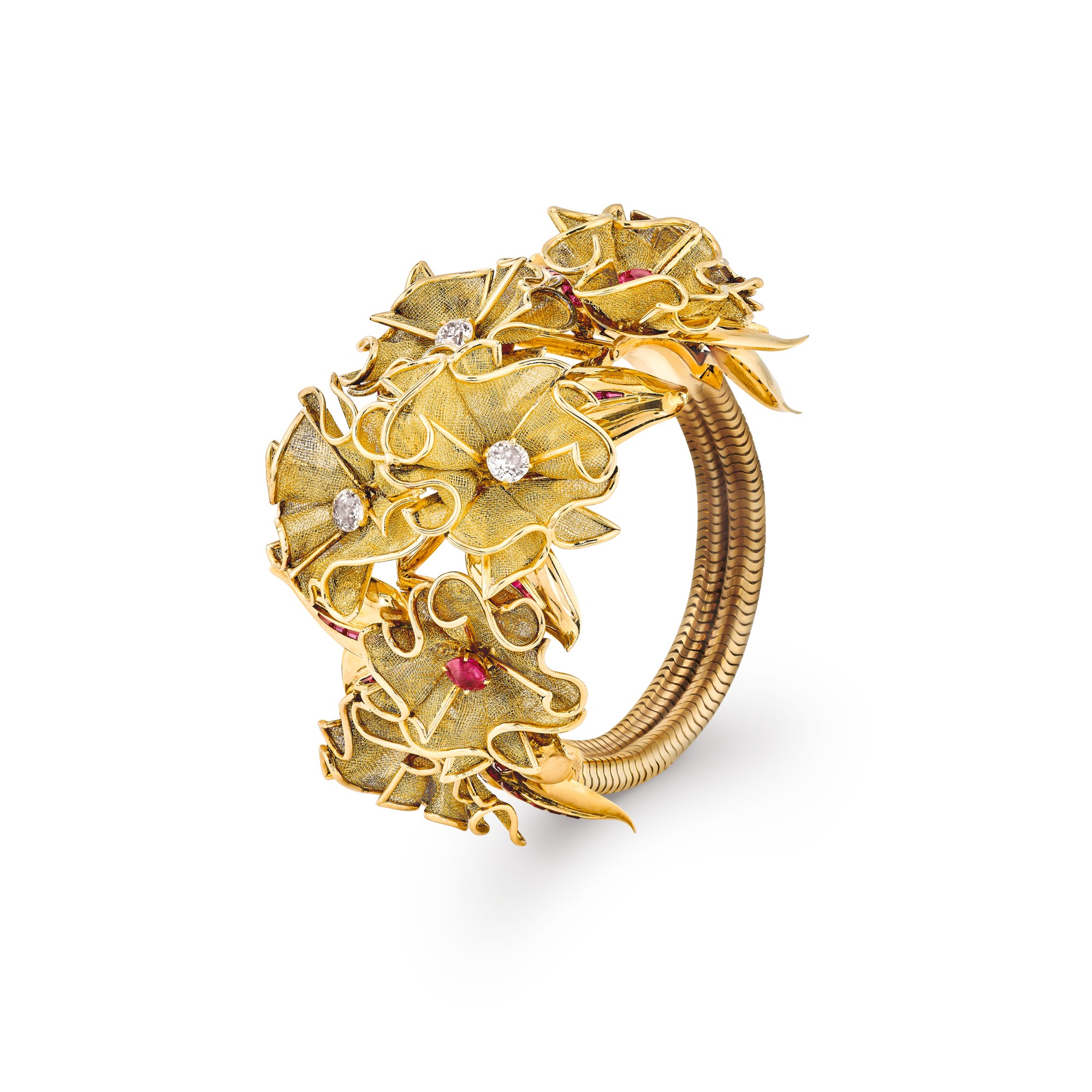
Little Flowers bracelet
Creation details
- Creation year 1946
- Stone Diamond
- Stone Ruby
- Material Gold
- Usage Bracelet
- Dimensions 70 × 65 mm
This bracelet Little Flowers, made in 1946, illustrates the revival of floral iconography that occurred in the 1940s, combining influences of Modernism and the sartorial arts.
It is composed of two flexible yellow gold snake chains that espouse the wrist, and a central motif of multiple flowerheads. The flower petals are arranged around a ruby or round diamond heart and formed by a method of folded yellow gold “tulle” with polished contours. This method confers the flowers with volume as well as naturalism. The use of extremely fine yellow gold threads gives the impression of a delicate fabric weave. The motif is completed by stylized leaves modeled in polished yellow gold enhanced with a calibrated ruby vein, which contrast with the openwork texture of the petals.
The floral repertoire reinterpreted
While this bracelet is entirely in keeping with the revival of the floral repertory first seen at the dawn of the 1940s, it nonetheless stands apart for its unusual interpretation of this revival. Indeed, “[if jewelers] study the fragility of flowers, they do so, as the stunning Van Cleef & Arpels Collection shows, in order to interpret it freely [thanks to the] exquisite gold tulle work with which the master jeweler forms petals [as well as] dancers’ tutus, bows, and shells.”1Paule Malardot, “Les beaux bijoux,” L’Aurore (December 21, 1946): 2.
The gold tulle technique
This gold tulle technique was used for the first time in 1942 on a bracelet also adorned with floral motifs, but the tulle only served to adorn flowers set with rubies, sapphires, and diamonds, as seen in the Tulle clips and rings.
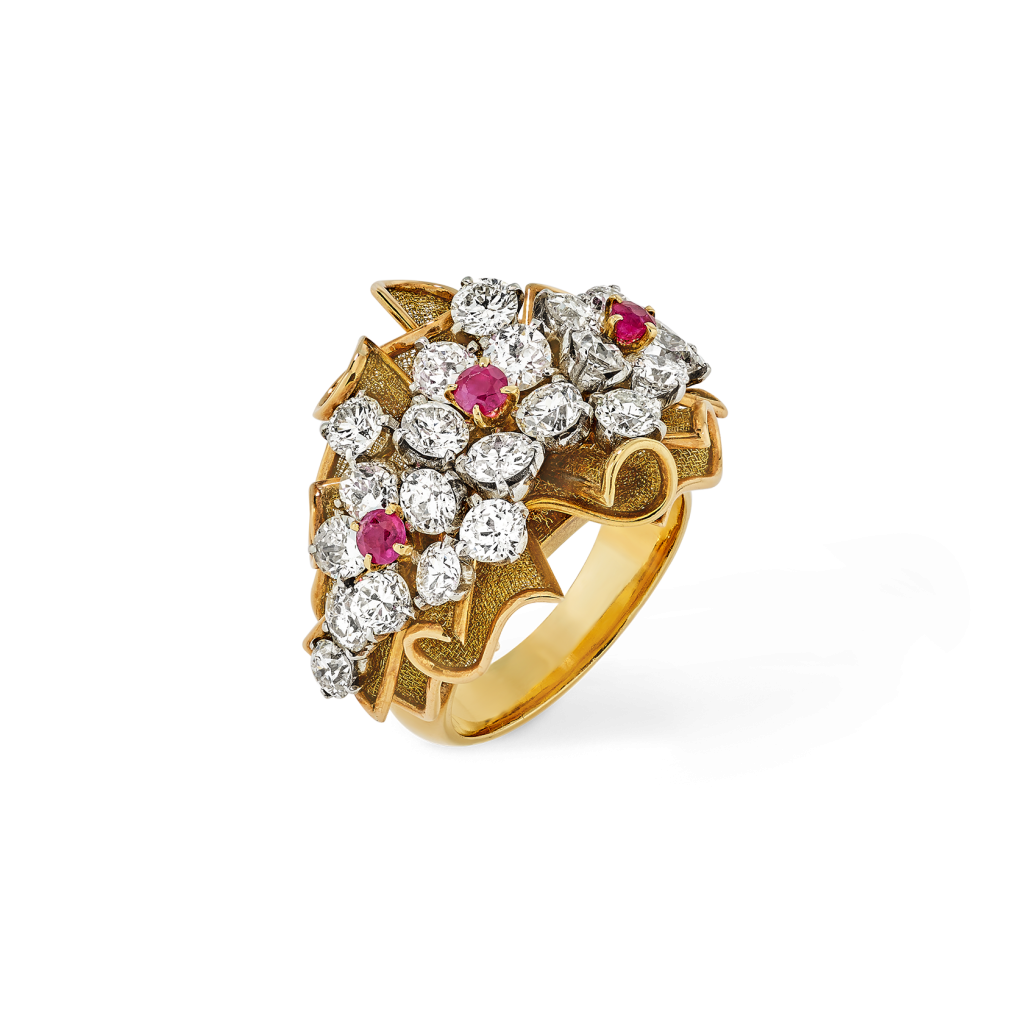
This technique of “weaving” thin metal threads echoed the research undertaken at this time into imitating lace for the Bow clips, as well as for ones in the form of rosettes and cockades. From 1940, ornamentation abounded, whether derived from clothes (like ribbons, bows, and sequins) or inspired by weaves of fabric (like lace or even wickerwork).
The persistence of modernism
This bracelet not only illustrates the renaissance of the floral repertory and borrowings from the world of couture, but also the persistence of Modernism from the 1930s with the use of the snake chain. Designs from the late 1930s, like the Passe-Partout and Silhouette, were created in the same vein, whereby a degree of naturalism was tinged with “an adorable hint of romanticism,”2Paule Malardot, “Les beaux bijoux,” L’Aurore (December 21, 1946): 2. as also seen in the Violet jewelry range.
To go deeper
